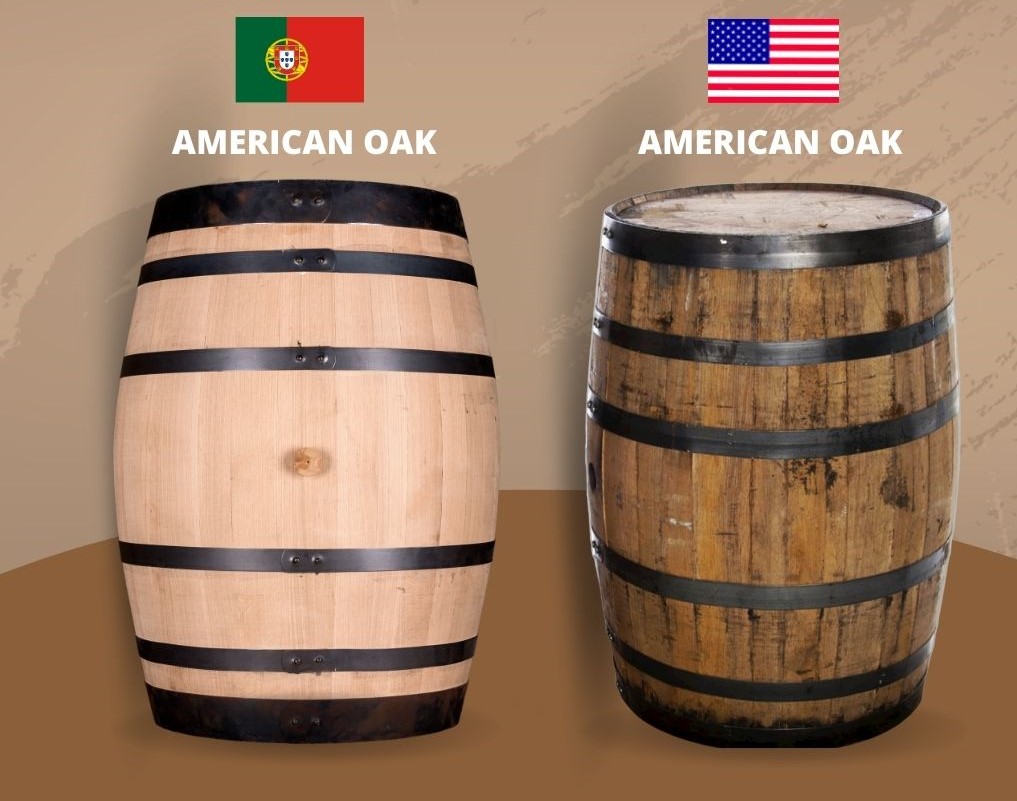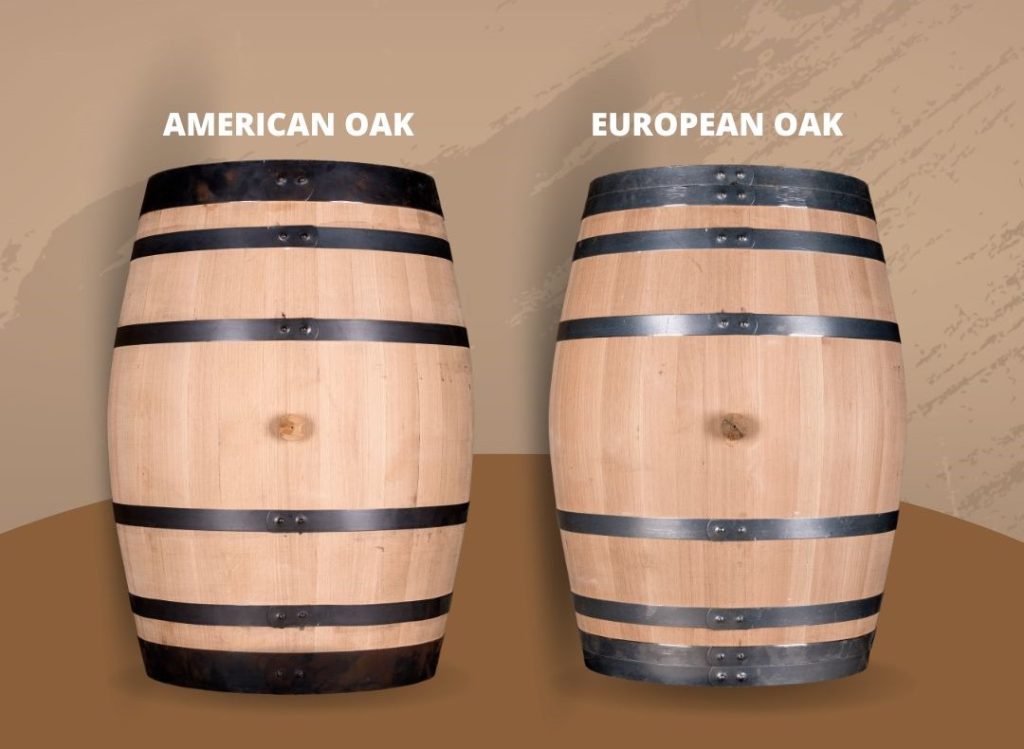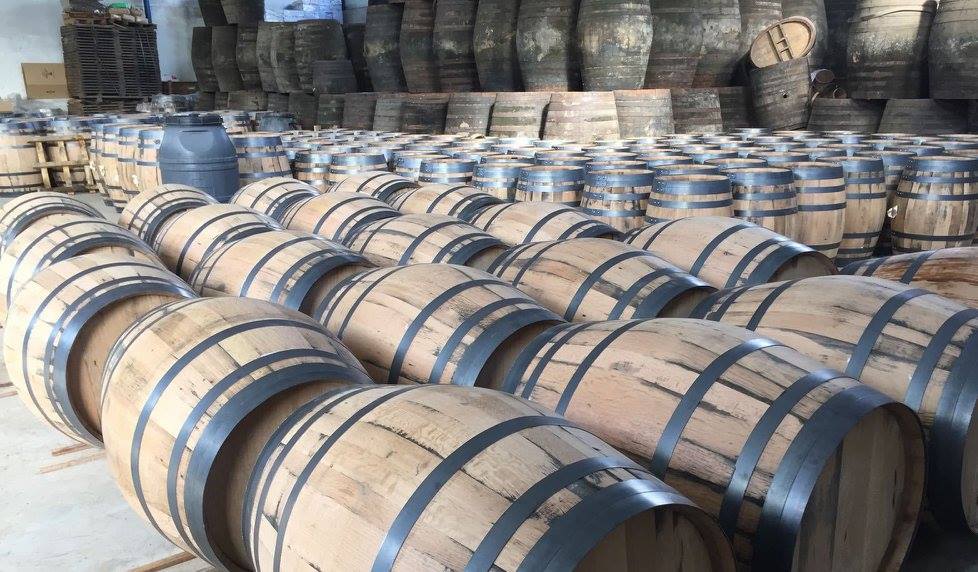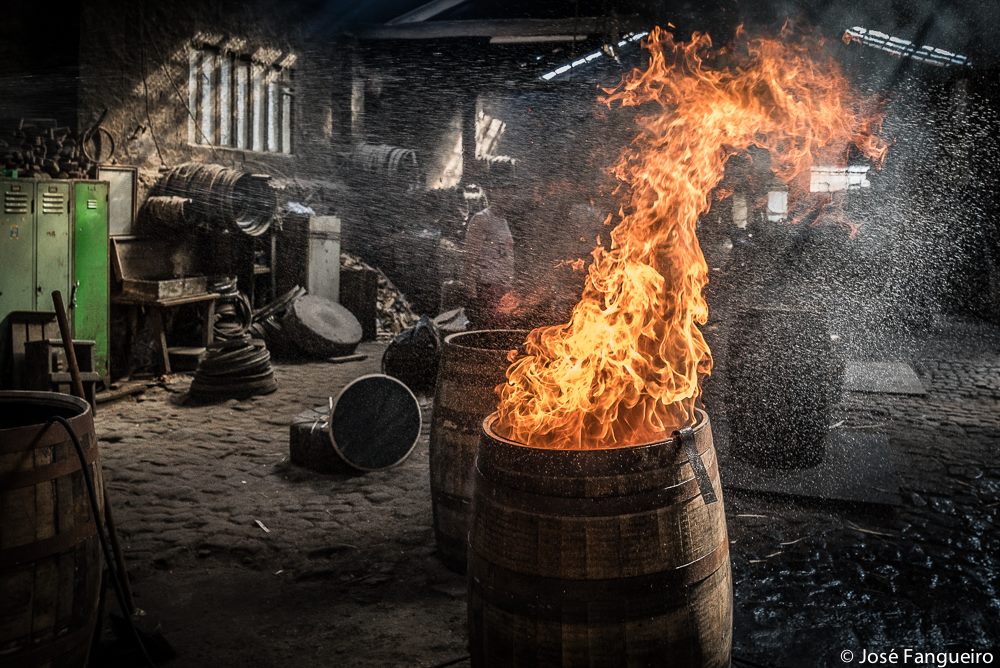Here we will look at the different ways that barrels are produced in the US and Europe as well as looking at the different properties that American and French/European oak have.
When comparing a US cooperage with a typical European one, the most obvious difference is scale – as with so many things, Americans just build them a lot bigger. The main American cooperages will have much of their barrel production automated, with barrels travelling down conveyor belts where one robot after another will assemble the barrel. Meanwhile in Europe, barrel production will be a lot more manual with highly skilled coopers building one barrel after another (indeed the tradition in Europe for previous generations has been for coopers to be paid in a large part by piece work to incentivise productivity). The charring of the barrels is also normally done manually in Europe (in our cooperage we char using sawdust to flame the barrel, using the cooper’s judgement to hit the right char level), but in the US it is a tightly automated and timed process with jets of gas used to char the barrel.
The high level of automation means that American cooperages can bang out vast quantities of barrels, producing many hundreds if not thousands a day; this mass scale production means however that American barrels lose out on the artisan touch you will find in European cooperages. This means for example that American barrels are much straighter and do not have the more prominent bilge that European barrels have, because bending the wood to make the larger bilge is a difficult l« and time-consuming job to do. You will also see that the staves on an American barrel are typically uneven with one jutting out from its neighbour. And American barrels are not normally sanded, so you will not see the smooth finish that European cellars like to see. Finally US barrels are generally 200 litres rather than the European standard of 225 litres.

It is fair to say that American barrels are generally more rough and ready without the elegant form of their European counterparts and that partly explains why you can pay a lot less for them. But these differences are largely cosmetic as the most important difference lies in the different species of oak that are used to make barrels in the two continents. American (white) oak is from the Quercus Alba species, whilst French/European oak will be Quercus patrea or Quercus robur: the key difference is that the American oak has a more fine grain and higher density, compared to the coarser, larger grain found in Europe. This difference in grain, means that European oak has a gentler more subtle interaction with the wine or spirit being aged, so you get more subtle and spicey notes, with silkier textures. American oak will lend a more potent flavour with more emphasis no notes like vanilla, cream soda or coconut and a more creamy texture and will generally impart a more rapid ageing process. So like their external appearance, American barrels will generally produce more rugged flavours.

At our cooperage we produce more French/European oak barrels, but we are seeing growing demand for American oak barrels – but when we produce barrels using American oak, we of course produce them to the more exacting European standards, with a beautifully finished exterior and the larger bilge. The generations of coopers who have produced are barrels would roll in their graves if we ever started producing the more rough and ready style seen in the US!


